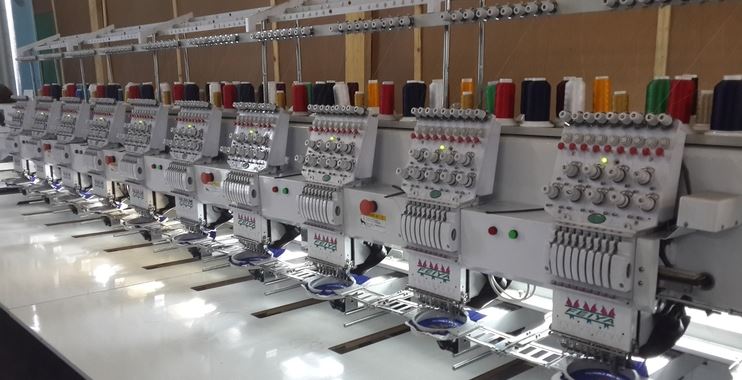Evolution of Embroidery Technology

Embroidery Technology Then and Now
History of Machine Embroidery – The Early Days
The evolution of embroidery technology needed a seed to start. Machine embroidery began in the middle of the 19th century with the invention of the hand embroidery machine. The operator was required to move the fabric above and below the needle with a hand crank and guided the needles along a pattern. Despite the effort it took to work the machine, it was an efficient innovation, doing the labor of four hand embroiderers. Just after the turn of the century, in 1911, the first multi-head embroidery machine was invented, allowing users to produce multiple pieces of work at once.
It wasn’t until the 1950’s that embroidery machines became common and it was 30 more years before computer-controlled machines were invented. In the 1980s, the earliest versions of the modern computerized embroidery machine were developed.
Wilcom and Melco were two of the pioneers in the field. Wilcom introduced the first graphic design system for embroidery that could be run on a microcomputer, and Melco produced the first embroidery sample head and the first digitizing system for embroidery machines.
Since the 1990s, computerized machine embroidery has become widely popular for both commercial and personal use. Now, new technology is making the process even more efficient and profitable. Modern innovators are looking at new ways to increase the efficiency, ease of use, and versatility of computer-controlled embroidery machines. Some of the latest developments include higher speeds, more needles per head, more attachments per head, and more precise cutting with laser technology, to name a few.
Evolution of Embroidery Technology – Recent Hardware Innovations
Melco Industries, Inc. recently released the EMT16 Plus, which introduces a significant upgrade to their previous model. The new machine offers the advantage of embroidery heads that can be stopped or started independently. Traditional multi-head machines require all heads to shut down if one needs a bobbin changed, for example. The new model increases machine productivity by 50%. Another factor that contributes to the machine’s efficiency is the Acti-Feed thread control system, a monitoring system that adjusts the feed and tension automatically.
Another recent innovation was introduced by Coloreel. Their Embroline thread coloring attachment applies color instantly to threads during the embroidery process. This method opens up a world of possibilities in terms of color design and effects. In addition, it allows an embroidery machine to use a single reel of thread per embroidery head, eliminating the necessity of maintaining a large stock of threads and taking time to rethread the machine frequently. With a minimum of thread cuts and lock stitches, the quality of the embroidery increases with this new technology.
While technology has revolutionized the embroidery business, there has also been a renewed demand for hand-design techniques, such as beadwork and sequins. To answer this demand, Barudan has introduced a 4-in-1 machine that does sequin embroidery along with coiling, chain-stitching, and cording. The company has also released a sequin attachment for round embroidery heads that allows any needle on the rotary head to attach a sequin.
Another advance in embroidery technology decreases time spent on maintenance. Lubrication is a time-consuming task, but newer machines are replacing gears with sealed bearings and belts that don’t need to be oiled. In addition, many newer machines are quieter, more durable, and have more options for accessories and attachments.
Embroidery Shop Management Automation
More recently, the evolution of embroidery technology moved from hardware to software. Onsite business management software is a software package designed specifically for the embroidery industry. It has features that are especially geared toward embroiderers, such as design and production variables. With Onsite, embroiderers can manage all aspects of their shop with a single business software solution designed for their business. The proofing software also allows customers to approve a piece of artwork online. The software includes a price calculator that can base prices on stitch count or the number of colors. Another benefit is the size matrix that lets the owner enter multiple sizes for a single item. These features are of great benefit to businesses that sell embroidered products.



